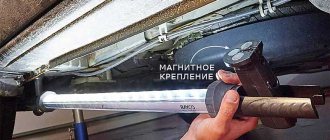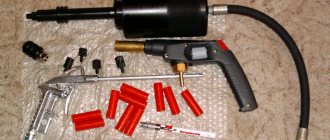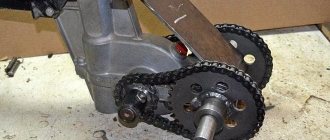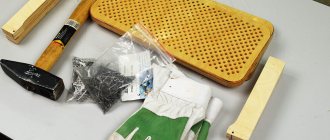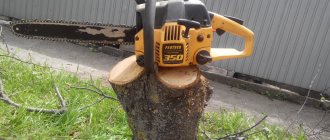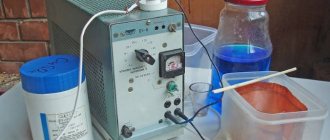Rounding machines are the main components of wood processing lines, which are applicable both in standard workshops and in the manufacture of similar products with your own hands. The main function of this machine is to remove the smooth top layer from each log using a milling cutter with a complex design and different types of knife sharpening.
Log rounding machine
Currently, there are a huge number of similar products of various types and purposes on sale, among which it is not at all difficult to choose the equipment that is ideal for your case.
Why exactly a log?
First, let's find out what a rounded log is and why the vast majority of people prefer to build housing from it.
Important: speaking in the dry language of definitions, a rounded log is usually called a straight tree trunk, pre-processed on woodworking machines to give it the correct cylindrical shape. As a result, the top uneven layer and knots are removed, and compensation and mounting grooves are applied.
Scheme of a rounded log.
Advantages of the material
- Wood itself has a natural porous structure, as a result of which it is one of the best heat and sound insulators.
- All trunks have a clearly fixed diameter; the maximum deviation here can be no more than 2 mm. This makes it possible to select scaffolding for the construction of premises for various purposes with specified characteristics.
- At the moment, there is simply no building material that is more environmentally friendly and beneficial for people. Unlike wood, traditional brick or modern types of building materials can only boast of environmental neutrality.
Having clear geometric dimensions, this material fits perfectly together. Specially designed grooves ensure high tightness and quality of inter-crown seams.
- Although the price of rounded logs may be higher than that of many competitors, such houses do not require additional internal and external cladding. This material itself has natural beauty, as a result of which owners save significantly on finishing.
- Modern woodworking equipment makes it possible to initially produce trunks with ready-made connecting elements. This significantly speeds up the construction process and gives a lot of layout options.
- You may have already heard that natural wood breathes. This means the ability of the array to take excess moisture from the air and release it when conditions change. Simply put, wood is a natural air conditioner, providing an ideal microclimate for human life in the house.
- And finally, the construction instructions are quite accessible. A good owner, with a strong desire, can build a simple bathhouse, barn or small country house with his own hands.
Some product characteristics.
What are the disadvantages
- As we have already said, wood is a living material, so over time the wood begins to dry out and crack. This is true, but thanks to modern impregnations and primers for wood, such processes can be significantly slowed down.
- Many people know that during the process of growth, a tree trunk slightly twists in a spiral. After the cut, this spiral sometimes begins to unwind. This is why craftsmen do not recommend building from freshly cut timber; the structure may fail. But a dry rounded log does not have this drawback.
- Disadvantages such as high fire hazard and susceptibility to biological pests are easily eliminated using the same specialized impregnations.
- Perhaps the only significant drawback of any wooden structure is the high percentage of shrinkage of new houses. Well-dried, high-quality wood shrinks up to 100 mm for every 3 - 4 m of wall in the first year. And 10 - 20 mm each for another 2 - 3 years. Freshly cut timber will take up to 10 years to shrink.
How to assemble a log house from rounded logs with your own hands
Start by choosing the right log diameter for your climate. If the local air temperature in the cold season does not drop below - 30 22 - 24 will do . For frosty winters, logs from 26 cm will be required.
Be attentive to material defects. Monitor the straightness of the forms and mercilessly reject specimens with visually recorded curvature. To obtain the required length, you can use horizontal mating (splicing) of short logs:
It is not advisable the logs of the frame and top crowns and it is better to initially select them to the desired size.
Decide how you will deliver the timber to high tiers . You can use a block system or a simple device with laying a smooth beam on the upper crown and lifting the building material using slings:
How to tie a partition to an external wall
The inner wall is connected to the outer wall depending on the type of corners . If the corners were knitted with a remainder , then it would be reasonable to do the fifth wall with a remainder. If the log house is created without any residue , then the partition is cut in without it - flush.
Notching on a tenon is popular - in the tail :
A frying pan with a straight side is called a semi-frying pan . Convenient for cross-shaped connections between walls.
They are also cut with a frying pan - a vertical comb that has an extension towards the end. The corresponding grooves are made in the crowns of the external walls:
Laying on the foundation
A bitumen-impregnated board 50 mm thick and 150 mm wide is laid on the foundation, and a frame hewn . Check the horizontality of the rims and the verticality of the corners, adjust if necessary.
Fixing the crowns
To fix the crowns together, wooden pins are used - dowels or dowels . They are hammered with a wooden hammer into holes drilled in a checkerboard pattern in increments of 1.5 - 2 m. The depth of the hole is drilled with a margin of 3 - 5 cm so that the log does not hang on the dowels when drying. Details in the video:
At least 2 into the walls at a distance of 0.15 - 0.2 m from the edge.
The diameter of the dowel should be from 20 mm. You can purchase shovel handles and cut them into cylinders of the required length. The diameter of the blanks made in this way will be slightly larger than the norm - 25 mm.
The drill is taken 1 smaller - 24 that the dowel fits tightly. There is no threat of the log hanging; as the tree shrinks, the drilled hole diameter will increase.
The dowel will go in easier if it is moistened in working oil and the end is chamfered.
When laying crowns, be attentive to the drawings and leave the necessary openings for windows and doors. Working on the overlapping crown, cut the opening plumb to size and process the side ends: they should end with a vertical ridge:
When installing jambs and door frames in openings, you should leave a margin of 5 - 10 cm for shrinkage. A similar distance must be provided if the openings are not created during the assembly process, but are cut out with a chainsaw in the finished log house.
Insulation
Insulation can be carried out during the construction of walls, but it is permissible to caulk an already assembled log house. Felt, hemp, flax, jute or other special materials are placed between the logs.
The finished log house is left for natural drying and shrinkage. The drying time of the log house according to the technology is 1 year.
What affects performance
To determine the basic parameters of the material, there is a set of regulations. In our country this is GOST 2708-75, in the west ISO 4480-83. There is no big difference between them, the main parameters are identical. It is on this data that a program such as a calculator for rounded logs of volume, weight, density and other characteristics is based.
Array volume table.
Advice: it is desirable that the table of volume of rounded logs be original, that is, taken from the above-mentioned regulatory documents. Since now there are many corporate tables compiled taking into account the commercial interests of some corporations and containing inaccuracies that are beneficial specifically for those who compiled them.
Machines and equipment
Even 50 - 100 years ago, every carpenter or just a good owner knew how to round a log at home. Due to the fact that this occupation is long and very labor-intensive, with the development of woodworking production there are not many real specialists left.
Of course, in the debate about whether a log or a rounded log is cheaper, an ordinary unprocessed trunk wins. But building a good house or a high-quality bathhouse from “wild” material is almost impossible. Apart from the time spent on handicraft cylindering and labor-intensive installation, you will not be able to seal the seams and joints hermetically. Accordingly, the room will be cold and will not last long.
Functions
The main function that any rounding machine has is the processing of logs as a body of revolution by milling. But to assemble a log house, simply cylindrical blanks are not enough. And in this case, additional equipment capabilities will come to the rescue:
- excavation of grooves to form various locking connections;
- production of parquet dies, timber;
- sawing of linear products;
- sawing timber into carriages and then into edged boards;
- all stages of log rounding, from roughing to final;
- removal of mounting bowls and compensation grooves.
In this case, the log itself is not reinstalled, but cutters and individual components are changed during the work. The result is parts with a wide range of diameters. The limitation concerns the length of the processed logs: the sleds are designed for seven-meter workpieces. A skillful combination of cutters and working techniques allows you to produce complex wooden structures.
Methods for joining logs in a log house
Regardless of how the type of crown is laid, special attention is paid to the formation of longitudinal, corner and T-shaped connections.
For chopped logs, three “bowl” cutting technologies are used: Russian, Canadian and Norwegian log cutting, as well as “paw” cutting. For rounded logs, the formation of planting bowls is typical using Russian technology:
Longitudinal connection of logs (lengthwise)
To lengthen a log, a dovetail joint is used, since it allows you to create the most durable and reliable joint connection.
Dovetail joining of logs (trapezoidal tongue-and-groove joint)
Longitudinal connection of logs to studs
End connection of logs to staples
End joining of logs on brackets
Splicing logs along the length - tongue and groove on brackets
Type of tenon joint of logs along the length
Corner connection of logs
Planting bowls are usually made in a factory way to form a “bowl” joint in half a tree.
When building a house from rounded logs, three types of angular connections with the remainder are used:
Corner notch “in the oblo” from logs and a carriage with the remainder (half a tree, a rolled bowl, a fat tail)
Cutting “into the bowl” or “into the cloud”
In this case, the connection has a residue, looks beautiful, but increases wood consumption.
The technology for installing rounded logs using this method has three varieties:
- with an oval comb . There is an oval ridge in the recess of the bowl;
- half a tree . A seat is cut out in half the diameter of the upper and lower logs;
- in the fat tail . In the recess of the bowl of one log there is a special recess, and in the bowl of the other log there is an additional protrusion.
Types of cutting corners from logs “in a clap”, connection with a ledge
Cutting "in a hurry"
This fastening method is distinguished by cutting out a bowl in the lower part of the log; as a result, the upper log seems to slam down the lower crown, which is why it is called clap.
Cutting a corner from logs “in okhryap”, corner knot with remainder
Cutting "in the okhryap"
When cutting corners using the “sharp” method, the log has additional notches in the seats.
Much less often they use the residue-free connection method - “in the paw” . In turn, it has three options: a simple (straight) paw, a paw with a cut, and an oblique paw with a cut.
Corner cut of a log - straight paw with a notch
Corner felling of logs - oblique paw (dovetail) without residue
Connecting logs in the corners without leaving a trace - an oblique paw with a cut
T-joint of logs
Connection (cutting) of internal walls into load-bearing ones - dovetail and into a bowl. This is done using a dovetail connection (residue-free method) or “into a half-tree bowl” (connection with a remainder).
Device
The installation has several main components. The bed is made in the form of a metal frame. It can have a rigid welded connection in the form of a rectangular pipe or a mobile connection of individual metal elements using bolts and nuts. It is the basis for fastening all structural elements.
The rounding machine contains guides along which the sawing tool moves. They usually form a single structure with a metal frame. In certain types of installations, the log moves along guides.
There may be one or two (front and back) headstocks. Their purpose is to secure and twist the log. On the headstock in some models of machines there is a dividing head, which serves to set a certain angle of rotation for different stages of processing.
The unit for fastening tools and moving mechanisms is a caliper.
The main purpose of the cutter is to fasten the cutting tool. It also provides reduced vibration, increased accuracy of operations and ease of entry into the workpiece. There are shaped and universal cutters.
The knives of the rounding machine are made of high grade steel. The cutting tool is attached to the cutter so that it can be easily replaced or removed for sharpening.
In addition, additional elements are installed. These are levers that make it easy to install the workpiece on the frame, and stop rollers that prevent it from sagging. There are also brakes and a carriage lock. They are used in machines with the function of removing the crown bowl and are installed at the end of the carriage. To excavate a longitudinal groove, a log rotation regulator is used.
Modern manufacturers of woodworking equipment equip such rounding machines with automated computer-controlled modules.
Assembling the device and preparing for work
We install the movable platform on the work table of the circular saw. On the sides we additionally attach sides made of wooden slats.
Then we prepare the blanks: from square wooden blocks it will be necessary to make octagonal bars.
We fix the workpiece between the bolts, having previously drilled mounting holes at the ends.
Turn on the circular saw. Using a screwdriver, rotate the workpiece. We feed the platform forward onto the saw blade and remove all excess.
As a result, we will get perfectly smooth rounded bars. All that remains is to sand them with sandpaper.
Classification
Experts propose to classify rounding machines according to five parameters:
- type of mechanism;
- the method of moving the log;
- level of automation;
- drive power type;
- diameter of the workpiece used (minimum – 80 m, maximum – 500 m).
Two types of mechanisms are used in installations. The first is a pass-through (rotary) one, which allows you to continuously move the wood through the cutter. The second is cyclic (turning), in which processing is performed by repeating a cycle of actions.
If cyclic actions are performed by a cutting tool, the machine is classified as a cyclo-pass type, and if a log moves, it is classified as a cyclo-positional type. In the mechanisms, logs have the ability to both rotate and move rectilinearly along the guides.
Video on the topic
You can watch the author’s video below for details on how to make a round piece of wood without a lathe. The author of J-woodworking shared his experience.
wood bar jig / Anyone can make wood bars easily without lathes [woodworking]
Andrey Vasiliev
Ask a Question
Recommendations before purchasing
For the chosen level of productivity, it is important to consider the degree of automation of the rounding machine.
In mechanized models, the operator loads and unloads logs, configures and adjusts the mechanisms. He also monitors the quality of work performed at all stages of operations.
In automated rounding machines, the specialist servicing it is assigned the role of process controller.
In semi-automated installations, the master joins the process after the machine has completed one cycle of operations.
Note! To create optimal and uninterrupted operating conditions, it is important to select the appropriate type of drive power supply.
Electric can work without interruption, provided that the power lines are reliable or there is an additional power generator. Gasoline requires constant refueling, but does not depend on external factors.
But the main choice is between pass-through and loop types. The pass-through will provide high productivity, sometimes at the expense of the quality of processing. Most models of such machines do not have the ability to make the surface of the log smooth, without burrs and roughness. Cyclic installations work much slower, but at the same time they have a number of advantages:
- provide very high quality processing;
- perform the entire set of operations;
- have compact dimensions;
- The design is stable and easy to maintain.
Offers for professional work
On the woodworking equipment market there are offers of any price category and for different technical needs. The most popular models are “Sherwood”, “Termite”, “Cedar”, “Taiga”, “Terem” with a full range of functions.
Technical characteristics are presented in the table.
| Model | Log length, mm | Diameter range, mm | power, kWt | Time to process one log, min |
| "Sherwood OF-28C" | 5950–6150 | 200–400 | 7,5 | 15–30 |
| "Termite 280OU" | 6200 | 160–280 | 22 | 30–40 |
| "Kedr OS-100" | 6200 | 160–240 | 7,5 | 15–30 |
| "Taiga OS-2" | 6200 | 160–240 | 9,8 | 30–40 |
| "Terem 8000V" | 8100 | 160–400 | 2,6 | 30–40 |
Stages of designing a machine yourself
Purchasing a professional installation for producing processed wood is an expensive proposition. But there is an alternative solution: you can make a machine for rounding logs with your own hands.
A sawmill is used as the base. The cone in the front part is replaced with a stop. A bearing is inserted into the tailstock. You will also need an electric motor to ensure the torsion of the log. The rotation can be manual, then you need to make a handle.
The cutter is assembled as a separate unit from a very durable material. Its movement can be ensured by laying rails. This is the path along which the cutter will move. In this design, the workpiece must be positioned along the rail and rotated so that the cutter slides along it.
Before installing the rounding machine, concreting (if not available) or compacting the area of the required size is carried out. Next, the frame sections are assembled and leveled in the horizontal plane. The maximum installation error should not exceed 0.5 mm per 1 m in all directions. Installation height 20 cm.
The subsequent assembly steps are as follows:
- installation of the power mechanism;
- installation of the front and rear headstocks so that their axes coincide and are parallel to the guides;
- fastening racks for cables for mobile power cables;
- cable tension;
- clamp-stop equipment for the power mechanism;
- grounding installation;
- connecting the motor and checking the direction of rotation of the lumber. The desired direction is regulated by changing the order of connecting the motor phases;
- mounting a shaped cutter on a conical part using bolts;
- screwing a universal cutter into the body of a figured cutter. In order to avoid imbalance, the knot is tightened with a wrench;
- checking for correct assembly.
A homemade machine requires preventive maintenance if it is idle for a long time or installed in a damp room.
The construction of a private house, cottage, or residential log house requires high-quality timber, which is processed using professional equipment. For technical buildings, you can round the wood yourself.
Loghouse installation technology
Waterproofing is laid on the horizontal surface of the poured foundation.
Roofing material is suitable as a material. For laying, the foundation is lubricated when heated and roofing felt sheets are placed on top. After drying, another layer is made; boards with a thickness of at least 5 centimeters are placed on the waterproofing layer, and a layer of tow or jute is laid on top of the boards.
This will enhance the thermal insulation properties, because up to 40% of the heat escapes through the floor and foundation!; A log house is installed on the insulation layer. As a rule, production logs are numbered. This wall kit is easy to assemble according to the attached diagram; Lay the crowns strictly level, row by row, and fasten them with dowels.
Make sure that the logs lie flat!; A layer of insulation, also in the form of tow or jute, is placed on each laid crown. The insulation is attached using a construction stapler; In addition to bandaging at the corners, the logs are connected every meter of length using spikes. Additional fastening will make the structure stable.
Self-production of a rounding machine for wood processing
Since ancient times, humanity has used trees to build housing. This material is widespread, does not require complex preparation and retains heat well. Nowadays, wood can be subjected to any treatment to give the desired shape to the log. To obtain even logs with the same cross-sectional area, rounding machines are used.
This installation allows for various wood processing operations:
- Wood rounding.
- Making grooves.
- Production of edged boards.
- Obtaining elements for parquet.
- Trimming boards.
- Production of timber.
- Milling smooth logs.
- Sawing wood onto a carriage.
Rounding machines are used in sawmills, large industries and in private households. The main function of the equipment is to remove the top layer of wood using a milling cutter and various types of knife tools.
Types of rounding equipment
Depending on the technology, the log rounding machine is divided into:
- Passage – carries out wood processing while moving, without stopping.
- Cyclic – when processing wood, the movement of the log is interrupted. The movement pattern is a cycle of operations.
- And also cyclic installations are classified into two subtypes:
- Cyclo-positional - material processing occurs in the process of advancement relative to the tool
- Cyclo-passing - wood is subjected to woodworking with a tool that itself makes the necessary movements.
According to the mechanism of operation, the machines are divided into:
- Mechanical - require the presence of an operator who adjusts modes, configures, loads and unloads equipment.
- Automatic - the entire processing scheme is carried out by a machine. There are models where a person only needs to load the material.
- Semi-automatic - the installation automatically performs only one cycle of operations, and then the person must start the mechanism again.
A machine for rounding logs in the case of a separate type gives different productivity. Pass-through equipment is more productive, but inferior in terms of correct processing and the formation of pronounced roughness of the material.
Features of the design of machines for cylindering
The installation consists of main blocks - a metal frame, headstock and tailstock, cutters. Typically, square pipes with guides for the movement of the load-bearing structure and carriage serve as the frame. Headstocks are required to secure the log in the central part and to push for rotational actions.
The main running tools are cutters. They provide easy entry into the wood, reducing vibration and increasing accuracy. They come in universal and curly shapes. The universal cutter is used for classical rounding, milling and sampling of crown cups. A shape cutter is used when making grooves.
The cutters are equipped with knives that can be removed. If the obtained log parameters do not match, the knives must be replaced. They are made of durable steel and are used for a long time.
Types of log houses
1. Four-walled . This is a log house with four walls. Logs are knitted only in the corners:
2. Five-walled . Consists of four external walls and one partition (internal wall). The logs are tied in the corners and at the junction of the fifth, internal wall with the external ones:
3. Curly . In the shape of a semicircle or hexagon - an exotic option, which we will leave outside the scope of this article:
Selecting a machine for the production of rounded logs
To select a machine, you should not rely on advertised settings. It is necessary to evaluate the proposed samples well. Of course, it is useful to visit factories where such machines are used. Communication with direct equipment operators will bring good results when choosing an installation.
The following models are widely represented on the Russian market: Rus, Sherwood and Termite. Sherwood and Rus equipment can be separate components, or be part of a woodworking system. The volume of logs that passes through these installations is 24 cm. There are models that pass larger diameters. Such installations are used when processing various materials: birch, oak, ash, pine and others.
Of course, you can buy popular machines, but sometimes you have to modify them to suit your own needs. Therefore, a more practical way is sometimes to make a rounding machine with your own hands.
Pros and cons of using for wall construction
Calibrated logs have several undeniable advantages , thanks to which more and more people choose this material:
environmental friendliness;- aesthetic appeal;
- soft shade;
- energy efficiency;
- the ability to “breathe”;
- increased strength;
- construction speed;
- the opportunity to turn any idea into reality.
Thanks to the cylindrical shape, the cut of the log will be round. This allows the owner to fantasize about architectural possibilities. A beautiful log goes well with stone or the decorative texture of plaster. These materials can be combined with each other.
But a calibrated log is not without its drawbacks. Among them are the difficulties in finding high-quality wooden material. This material is more suitable for the construction of log houses in a classic style. Another important point is that wood needs constant care - this should be taken into account when choosing this material .
Reviews
Owners of houses made of rounded logs say that this material has a pleasant natural shade, and also that such a house does not require finishing. Another plus is that at first the room will smell strongly of wood, which is good for the lungs.
Some builders note difficulties in building a house related to the tightness of the logs, which is not always possible to achieve.
Reviews can be found on this and this forum.
Independent production of a machine for working with wood
It is preferable to make a homemade rounding machine using a sawmill. To twist the log, an electric motor is used, which is installed additionally. Instead of the front conical part, a stop is made, the bearing for which is the headstock located at the rear.
The production of a cutter occurs by assembling the constituent elements. A rail is used to move the cutter. The installation is reminiscent of a milling machine, since the log is installed in the existing grooves, then torsion occurs. As a result, the cutter begins to move along the log.
A homemade rounding machine is mounted on a hard surface, preferably concrete. When making the frame, sleepers or thick timber are also used.
Stages of machine assembly:
- Assemble the frame using a level to position it in a stable, horizontal position. Typically the frame height reaches 20 cm.
- Mounting the power structure (front and rear headstocks), onto which the electrical cable fastening cable is pulled.
- Equipping power racks with a stopper.
- Providing grounding.
- Connecting a motor that causes the log to twist. In this case, you should focus on the exact connections of the phases. If connected incorrectly, the direction of the power head will not coincide with the direction of the buttons.
- Checking the direction of log torsion. If the direction is incorrect, the phases on the electric motor must be replaced. It should be remembered that until the power phases are correctly connected, rotational actions of the log and the engine are prohibited.
You should also secure the headstocks firmly, installing them simultaneously with the guides. The lines of movement of the rack axes should be similar. To do this, measure the exact length between the longitudinal profile and the central part of the post and between the nearest guide and the center of the headstock. These distances must be equal for both headstocks.
After all installation operations, you should check the correct assembly and horizontal frame.
After standing for a long time without using your machine or being in a damp room, you need to keep the installation in a dry room before starting it to remove excess moisture.
Video: homemade rounding machine.
Advantages of a homemade machine
A do-it-yourself rounding machine has certain advantages:
- Low wood consumption.
- Obtaining material for any of your own needs.
- Achieving good quality of the resulting logs.
- Having a machine at hand.
Of course, like any purchased machine, homemade equipment requires the purchase of component parts. But processing wood using your own equipment turns out to be more suitable for the personal purposes of using the resulting log. Achieving certain technical properties of products occurs in the presence of home-made rounding equipment.


